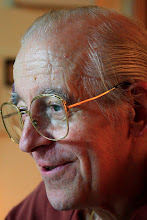Nel passato il riso veniva usato anche per altri scopi oltre che come alimento. Per esempio, gli antichi Indu’ usavano chicchi di riso per scoprire se uno stava dicendo la verita’ o no. Chiedevano all’individuo di mettersi in bocca dei chicchi di riso; se l’individuo gli sputava stava dicendo la verita’, se non li sputava stava mentendo. Quando uno mente si sente in colpa e la sua bocca si inaridisce, cosi’ i chicchi di riso si appiccicano alle gengive e trova difficile sputarli.
La versione moderna della macchina della verita’ venne inventata negli anni ’20 dal psicologo americano Guglielo Moulton Marston (1893-1947). L’aparecchio si basava sul fatto che la pressione sanguigna aumenta quando uno sta mentendo e la sua macchina della verita’ non era altro che un misuratore della pressione del sangue. Era il precursore del moderno poligrafo che misura risposte psicologiche quali la pressione sanguigna, i battiti del cuore, la frequenza respiratoria e la conduttivita’ della pelle.
Marston era anche uno scrittore di libri comici che negli anni ’40 creava il personaggio della Donna Prodigio. La Donna Prodigio fu il primo super-eroe femminile nel mondo dei libri comici, che fino a quel momento era stato monopolizzato da eroi maschili quali Batman e Superman. Una delle armi in possesso della Donna Prodigio era il Laccio della Verita’ che obligava coloro che venivano presi a dire la verita’.
Sfortunatamente, e noto ed accettato che il poligrafo, contrariamente al Laccio della Verita’, spesso sbaglia. Il bugiardo patologico riesce facilmente ad imbrogliare il poligrafo perche’ e’ in grado di nascondere le sue reazioni psicologiche mentre sta mentendo. L’autore americano Mark Twain (1835-1910) osava dire che il poligrafo lavora solo con chi non e’ capace di dire bugie. Ma c’e’ di piu’; se una persona e’ capace di imbrogliare se stessa, diventa ancora piu’ difficile scoprire se sta dicendo la verita’ o se sta mentendo. E’ nella natura umana credere in cio’ che si desidera sia la verita’.
Spesso anche la memoria dell’individuo cede ai desideri. Secondo la psicologa americana Bella DePaulo, dell’Universita della California, la ragione che i politici non dicono mai la verita’ e’ da ricercarsi nel loro desiderio di essere quello che non possono essere. Sto pensando se Kim Tae-ho (金台鎬, 김태호, 1962- ) quando l’estate scorsa veniva proposto come primo ministro nel governo coreano, sentiva che doveva rinunciare all’incarico perche’ il suo grande desiderio di diventare primo ministro aveva oscurato la sua memoria. Alla fine pero’, la verita’ saltava fuori grazie alle testimonianze fisiche che furono piu’ convincenti del piu sofisticato poligrafo.
La versione moderna della macchina della verita’ venne inventata negli anni ’20 dal psicologo americano Guglielo Moulton Marston (1893-1947). L’aparecchio si basava sul fatto che la pressione sanguigna aumenta quando uno sta mentendo e la sua macchina della verita’ non era altro che un misuratore della pressione del sangue. Era il precursore del moderno poligrafo che misura risposte psicologiche quali la pressione sanguigna, i battiti del cuore, la frequenza respiratoria e la conduttivita’ della pelle.
Marston era anche uno scrittore di libri comici che negli anni ’40 creava il personaggio della Donna Prodigio. La Donna Prodigio fu il primo super-eroe femminile nel mondo dei libri comici, che fino a quel momento era stato monopolizzato da eroi maschili quali Batman e Superman. Una delle armi in possesso della Donna Prodigio era il Laccio della Verita’ che obligava coloro che venivano presi a dire la verita’.
Sfortunatamente, e noto ed accettato che il poligrafo, contrariamente al Laccio della Verita’, spesso sbaglia. Il bugiardo patologico riesce facilmente ad imbrogliare il poligrafo perche’ e’ in grado di nascondere le sue reazioni psicologiche mentre sta mentendo. L’autore americano Mark Twain (1835-1910) osava dire che il poligrafo lavora solo con chi non e’ capace di dire bugie. Ma c’e’ di piu’; se una persona e’ capace di imbrogliare se stessa, diventa ancora piu’ difficile scoprire se sta dicendo la verita’ o se sta mentendo. E’ nella natura umana credere in cio’ che si desidera sia la verita’.
Spesso anche la memoria dell’individuo cede ai desideri. Secondo la psicologa americana Bella DePaulo, dell’Universita della California, la ragione che i politici non dicono mai la verita’ e’ da ricercarsi nel loro desiderio di essere quello che non possono essere. Sto pensando se Kim Tae-ho (金台鎬, 김태호, 1962- ) quando l’estate scorsa veniva proposto come primo ministro nel governo coreano, sentiva che doveva rinunciare all’incarico perche’ il suo grande desiderio di diventare primo ministro aveva oscurato la sua memoria. Alla fine pero’, la verita’ saltava fuori grazie alle testimonianze fisiche che furono piu’ convincenti del piu sofisticato poligrafo.
 Kim Yu-na
Kim Yu-na 
O Un-son
C’e’ pero’ da notare che al di fuori delle inchieste parlamentari, il gioco della verita’ e del falso viene costantemente alla ribalta. Ottimi esempi sono quelli di Kim Yu-na (金姸兒, 김연아, 1990- ), medaglia d’oro nel patinaggio artistico alle ultime Olimpiadi Invernali, ed il suo allenatore il canadese Brian Orser (1961- ) circa la causa della loro separazione; e quello fra la Federazione Alpina Coreana e l’alpinista O Un-son (吳銀善, 오은선, 1966- ) circa la disputa se veramente la O ha raggiunto la cima del Kanchenjunga (8586 m) nel Himalaya come orgogliosamente va dicendo in giro.
Evidentemente una delle due parti sta mentendo, ma e’ difficile per noi, gente sprovveduta, decidere chi ha ragione e chi ha torto. Considerando che non siamo in grado di chiedere un’inchiesta parlamentare in materia, mi viene da pensare se potesse saltar fuori una Donna Prodigio capace di darci una risposta!
Giorgio Olivotto
Seoul, Corea
26 dicembre 2010
Seoul, Corea
26 dicembre 2010






